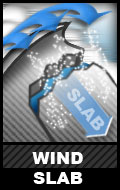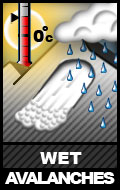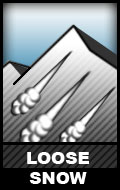Advisory based on observational knowledge and weather forecast available at time of posting (12am). Accuracy is subject to temporal and spatial variability and expires in 24 hours. Read the disclaimer and conduct your own assessment of conditions accordingly.
Sunday:
What you need to know:
Who would have thought we’d be bringing the snorkels back out this late in the season to breathe through the face shots that could be found on almost all aspects on Saturday?
In general the avalanche danger is down to moderate for Sunday, but there’s a couple catches.
Primary Concerns:
First, northerly winds were blowing more than strong enough to provide for rapid transport and redistribution of snow midday Saturday. Deep wind drifts and slabs developed in the upper elevations in leeward deposition areas. Considering the low visibility and conservative decision-making that was the rule (or at least should have been) on Saturday, the stability of steep, wind loaded slopes wasn’t well tested. Slopes seemed to be holding up well to natural triggers and weren’t overly sensitive to human triggers below ~35 degrees, but the wind slab problem will have to be more thoroughly assessed Sunday before committing to consequential lines.
Second, with a warmer, sunny day forecast for Sunday wet avalanche danger will increase rapidly through the day with the potential to become a problem of considerable nature by early afternoon. As the sun moves across the sky, solar radiation will affect East, South, and then West aspects. The wet avalanche danger will also work its way up the mountains over the course of the day as it warms, as the lower elevations are affected early and the upper elevations later in the day.
The wet avalanche danger will be a serious issue to contend with, considering all the new snow that has yet to be exposed to much sun or warmth. The new snow will begin moving in earnest once this mid May powder receives its initial exposure. Plan your day and route accordingly.
Pay attention to how warming and solar radiation effects the snow. Look for rollerballs, point releases, sluffs, and other signs of decreasing stability due to sun and warmth. If the snow is becoming heavier, wetter, gloppy, and less supportable, the wet avalanche danger is increasing.
Peripheral Concern:
Long running, medium volume human triggered and naturally occurring sluffs were observed Saturday afternoon in steeper terrain. This problem was exacerbated by the warmer temperatures later in the day and this will be even more pronounced on Sunday.
Danger trend:
Increasing through the day due to warming and solar radiation.
Mountain Weather:
Sunny. Light winds. Mountain temperatures in the lower to mid 30s.




